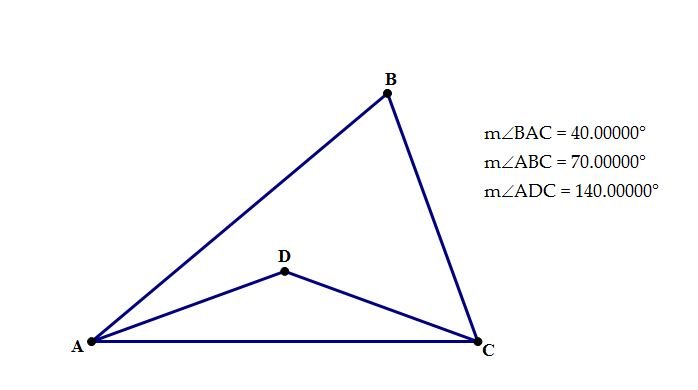Events & Promotions
|
|

GMAT Club Daily Prep
Thank you for using the timer - this advanced tool can estimate your performance and suggest more practice questions. We have subscribed you to Daily Prep Questions via email.
Customized
for You
Track
Your Progress
Practice
Pays
Not interested in getting valuable practice questions and articles delivered to your email? No problem, unsubscribe here.
- Nov 20
07:30 AM PST
-08:30 AM PST
Learn what truly sets the UC Riverside MBA apart and how it helps in your professional growth - Nov 20
01:30 PM EST
-02:30 PM IST
Learn how Kamakshi achieved a GMAT 675 with an impressive 96th %ile in Data Insights. Discover the unique methods and exam strategies that helped her excel in DI along with other sections for a balanced and high score. - Nov 22
06:30 AM PST
-08:30 AM PST
Let’s dive deep into advanced CR to ace GMAT Focus! Join this webinar to unlock the secrets to conquering Boldface and Paradox questions with expert insights and strategies. Elevate your skills and boost your GMAT Verbal Score now! - Nov 22
11:00 AM IST
-01:00 PM IST
Do RC/MSR passages scare you? e-GMAT is conducting a masterclass to help you learn – Learn effective reading strategies Tackle difficult RC & MSR with confidence Excel in timed test environment - Nov 23
11:00 AM IST
-01:00 PM IST
Attend this free GMAT Algebra Webinar and learn how to master the most challenging Inequalities and Absolute Value problems with ease. - Nov 24
07:00 PM PST
-08:00 PM PST
Full-length FE mock with insightful analytics, weakness diagnosis, and video explanations! - Nov 25
10:00 AM EST
-11:00 AM EST
Prefer video-based learning? The Target Test Prep OnDemand course is a one-of-a-kind video masterclass featuring 400 hours of lecture-style teaching by Scott Woodbury-Stewart, founder of Target Test Prep and one of the most accomplished GMAT instructors.
Kudos
Bookmarks
E
Be sure to select an answer first to save it in the Error Log before revealing the correct answer (OA)!
Difficulty:
 35%
(medium)
35%
(medium)
Question Stats:
69% (01:30) correct 31%
(01:23)
wrong
31%
(01:23)
wrong  based on 3563
sessions
based on 3563
sessions
History
Date
Time
Result
Not Attempted Yet
In the figure above, what is the value of x + y ?
(1) x = 70
(2) ABC and ADC are both isosceles triangles
Attachment:
Triangles.png [ 7.26 KiB | Viewed 76387 times ]
Kudos
Bookmarks
In the figure above, what is the value of x + y ?
(1) x = 70.
(2) ABC and ADC are both isosceles triangles.
Even when we consider both statements together we don't know the placement of points D and B. For example consider the diagram below:
As you can see we can have two different answers for x+y for two different placements of point D.
Answer: E.
Attachment:
Triangles2.png [ 10.79 KiB | Viewed 71277 times ]
General Discussion
Kudos
Bookmarks
Bunuel and others,
I feel this question has a significant gap --- is the original diagram drawn to scale or not?
Of course, on the GMAT, we know "Figures are drawn as accurately as possible. Exceptions will be noted." I discuss this in a blog post.
https://magoosh.com/gmat/2012/gmat-trick ... -possible/
This is a crucial fact for students to keep in mind when interpreting GMAT diagrams.
IF this diagram is purporting to be drawn as accurate as possible, then it's an exceptionally poor diagram. That angle looks nothing like a 70 degree angle. If it's drawn to scale, though, we have to accept that the diagram is somewhat close to symmetrical, and therefore, the 70-70-40 triangle would not be possible.
IF the diagram is not drawn to scale, which I suspect was the intent of the author, that needs to be explicitly stated. Then, the 70-70-40 triangle would be possible. Any bilateral symmetry is out the window if it's not drawn to scale. Here's a scaled diagram of the figure with the 70-70-40 triangle.

isosceles triangles.JPG [ 25.57 KiB | Viewed 63558 times ]
I believe, either way, the answer would be (E). Nevertheless, I think this is a crucial issue for students to consider while analyzing the possibilities for a given diagram on the GMAT.
What do others think?
Mike
I feel this question has a significant gap --- is the original diagram drawn to scale or not?
Of course, on the GMAT, we know "Figures are drawn as accurately as possible. Exceptions will be noted." I discuss this in a blog post.
https://magoosh.com/gmat/2012/gmat-trick ... -possible/
This is a crucial fact for students to keep in mind when interpreting GMAT diagrams.
IF this diagram is purporting to be drawn as accurate as possible, then it's an exceptionally poor diagram. That angle looks nothing like a 70 degree angle. If it's drawn to scale, though, we have to accept that the diagram is somewhat close to symmetrical, and therefore, the 70-70-40 triangle would not be possible.
IF the diagram is not drawn to scale, which I suspect was the intent of the author, that needs to be explicitly stated. Then, the 70-70-40 triangle would be possible. Any bilateral symmetry is out the window if it's not drawn to scale. Here's a scaled diagram of the figure with the 70-70-40 triangle.
Attachment:
isosceles triangles.JPG [ 25.57 KiB | Viewed 63558 times ]
I believe, either way, the answer would be (E). Nevertheless, I think this is a crucial issue for students to consider while analyzing the possibilities for a given diagram on the GMAT.
What do others think?
Mike














